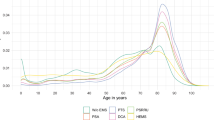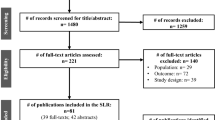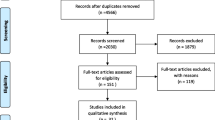Abstract
Aim
This study aimed at assessing emergency medical service (EMS) use by patients with acute myocardial infarction (AMI), factors associated with EMS use, and outcomes in the 1,200,000-inhabitant Italian region of Friuli Venezia Giulia.
Subject and methods
Anonymous health administrative databases were analyzed from 2010 to 2019. EMS use was assessed from Emergency Department and hospital discharge data for patients discharged with main diagnosis of AMI (ICD-9-CM 410.×1). Factors associated with EMS, likelihood of undergoing a primary percutaneous coronary intervention (pPCI) and of 30-day mortality were assessed in univariate and multivariate analyses.
Results
In 10 years, 14,900 AMI patients were hospitalized. Only half used EMS, with no changes over time. Demographic and residential factors and comorbidities affected EMS use. Although patients transported by EMS had increased 30-day mortality, undergoing pPCI decreased mortality significantly (in STEMI, OR 0.41).
Conclusion
In this region, patients transported by EMS had increased mortality, probably because of residual confounding due to AMI severity; however, undergoing pPCI halved mortality. EMS use has not increased over time and was not uniform across the region. This finding emphasizes the need of population campaigns covering all the regional geographic areas. The importance of transporting patients by EMS directly to PCI facilities should be stressed.
Similar content being viewed by others
References
AlHabib KF, Sulaiman K, Al Suwaidi J et al (2016) Patient and system-related delays of emergency medical services use in acute ST-elevation myocardial infarction: results from the third gulf registry of acute coronary events (gulf RACE-3Ps). PLoS One 11:e0147385
Callachan EL, Alsheikh-Ali AA, Nair SC, Bruijns S, Wallis LA (2017) Outcomes by mode of transport of ST elevation MI patients in the United Arab Emirates. West J Emerg Med 18:349–355
Canto JG, Zalenski RJ, Ornato JP et al (2002) Use of emergency medical services in acute myocardial infarction and subsequent quality of care: observations from the National Registry of Myocardial Infarction 2. Circulation 106:3018–3023
Charlson ME, Pompei P, Ales KL, MacKenzie CR (1987) A new method of classifying prognostic comorbidity in longitudinal studies: development and validation. J Chronic Dis 40:373–383
Fujii T, Masuda N, Suzuki T et al (2014) Impact of transport pathways on the time from symptom onset of ST-segment elevation myocardial infarction to door of coronary intervention facility. J Cardiol 64:11–18
Ho AF, Loy EY, Pek PP et al (2016) Emergency medical services utilization among patients with ST-segment elevation myocardial infarction: observations from the Singapore Myocardial Infarction Registry. Prehosp Emerg Care 20:454–461
Ibanez B, James S, Agewall S et al (2018) 2017 ESC guidelines for the management of acute myocardial infarction in patients presenting with ST-segment elevation: the task force for the management of acute myocardial infarction in patients presenting with ST-segment elevation of the European Society of Cardiology (ESC). Eur Heart J 39:119–177
Istat (2017) L’evoluzione della mortalità per causa: le prime 25 cause di morte. Anni 2003–2014. Istat, Rome. https://www.istat.it/it/files/2017/05/Report-cause-di-morte-2003-14.pdf. Accessed February 5, 2020
Istat (2020a) NoiItalia. Popolazione, Indice di vecchiaia. Istat, Rome. http://noi-italia.istat.it/index.php?id=3&tx_usercento_centofe%5Bcategoria%5D=3&tx_usercento_centofe%5Bdove%5D=REGIONI&tx_usercento_centofe%5Baction%5D=show&tx_usercento_centofe%5Bcontroller%5D=Categoria&cHash=1462b29d753704b2801577ed92869d0b. Accessed February 5, 2020
Istat (2020b). I.Stat. Mortalità per territorio di residenza. Istat, Rome. http://dati.istat.it/Index.aspx?DataSetCode=DCIS_CMORTE1_RES. Accessed February 5, 2020
Kahlon TS, Barn K, Akram MM et al (2017) Impact of pre-hospital electrocardiograms on time to treatment and one year outcome in a rural regional ST-segment elevation myocardial infarction network. Catheter Cardiovasc Interv 89:245–251
Kobayashi A, Misumida N, Aoi S et al (2016) STEMI notification by EMS predicts shorter door-to-balloon time and smaller infarct size. Am J Emerg Med 34:1610–1613
Kodama N, Nakamura T, Yanishi K et al (2017) Impact of door-to-balloon time in patients with ST-elevation myocardial infarction who arrived by self-transport — acute myocardial infarction-Kyoto Multi-Center Risk Study Group. Circ J 81:1693–1698
Lee SH, Kim HK, Jeong MH et al (2020) Pre-hospital delay and emergency medical services in acute myocardial infarction. Korean J Intern Med 35:119–132
Mathews R, Peterson ED, Li S et al (2011) Use of emergency medical service transport among patients with ST-segment-elevation myocardial infarction: findings from the National Cardiovascular Data Registry Acute Coronary Treatment Intervention Outcomes Network Registry — get with the Guidelines. Circulation 124:154–163
Muhrbeck J, Persson J, Hofman-Bang C (2018) Catheterization laboratory activations and time intervals for patients with pre-hospital ECGs. Scand Cardiovasc J 52:74–79
Rebeiz A, Sasso R, Bachir R, Mneimneh Z, Jabbour R, El Sayed M (2018) Emergency medical services utilization and outcomes of patients with ST-elevation myocardial infarction in Lebanon. J Emerg Med 55:827–835
Regione autonoma Friuli Venezia Giulia (2019a) Percorso assistenziale del paziente con infarto miocardico con sopraslivellamento tratto st (stemi). Regione autonoma Friuli Venezia Giulia, Venice. https://www.regione.fvg.it/rafvg/export/sites/default/RAFVG/salute-sociale/sistema-sociale-sanitario/FOGLIA53/allegati/11022019_PDTA_STEMI-FEB.pdf. Accessed February 5, 2020
Regione autonoma Friuli Venezia Giulia (2019b) Percorso assistenziale del paziente con sindromi coronariche acute senza sopraslivellamento del tratto st (nstemi). Regione autonoma Friuli Venezia Giulia, Trieste. https://www.regione.fvg.it/rafvg/export/sites/default/RAFVG/salute-sociale/sistema-sociale-sanitario/FOGLIA53/allegati/11022019_PDTA_NSTEMI-FEB.pdf. Accessed February 5, 2020
Regione Basilicata (2020) Basilicata in Salute. Il cuore non aspetta. Regione Basilicata, Potenza. https://www.basilicatainsalute.it/images/broch_tip.pdf. Accessed February 5, 2020
Regione Lazio (2020) Il tempo è cuore. Regione Lazio, Rome. https://www.regione.lazio.it/binary/rl_sanita/tbl_contenuti/A3_infarto_02.11.pdf. Accessed February 5, 2020
Regione Toscana (2020) Azienda USL Toscana nord ovest. Le regole d’oro salva-infarto. Regione Toscana, Firenzehttps://www.uslnordovest.toscana.it/attachments/article/3545/Decalogo_salva_infarto_DEF.pdf?idU=1. Accessed February 5, 2020
Servizio Sanitario Regionale Emilia-Romagna (2020) Ausl Romagna. Con il cuore con la testa. Regione Emilia-Romagna, Bologna. file:///C:/Users/valent.francesca/Downloads/casadei_copia-4.pdf. Accessed February 5, 2020
So DY, Ha AC, Turek MA et al (2006) Comparison of mortality patterns in patients with ST-elevation myocardial infarction arriving by emergency medical services versus self-transport (from the prospective Ottawa Hospital STEMI registry). Am J Cardiol 97:458–461
Zhang S, Hu D, Wang X, Yang J (2009) Use of emergency medical services in patients with acute myocardial infarction in China. Clin Cardiol 32:137–141
Funding
This work was partly financed by the Italian Ministry of Health and the Friuli Venezia Giulia Region (Grant NET-2016-02364191).
Author information
Authors and Affiliations
Corresponding author
Ethics declarations
Disclosure if potential conflicts of interest
The authors report no conflict of interest.
Research involving human participants and/or animals
All procedures contributing to this work comply with the ethical standards of the relevant national and institutional committees on human experimentation and with the Helsinki Declaration of 1975, as revised in 2008. Since this analysis was based on anonymous administrative data with no possibility to identify subjects, Ethical Committee approval was not required in Italy.
Informed consent
Since the data were completely anonymous, informed consent was nor applicable.
Additional information
Publisher’s note
Springer Nature remains neutral with regard to jurisdictional claims in published maps and institutional affiliations.
Rights and permissions
About this article
Cite this article
Valent, F., Di Chiara, A. Use of emergency medical service in acute myocardial infarction in an Italian Northeastern region. J Public Health (Berl.) 30, 1523–1531 (2022). https://doi.org/10.1007/s10389-020-01422-9
Received:
Accepted:
Published:
Issue Date:
DOI: https://doi.org/10.1007/s10389-020-01422-9




